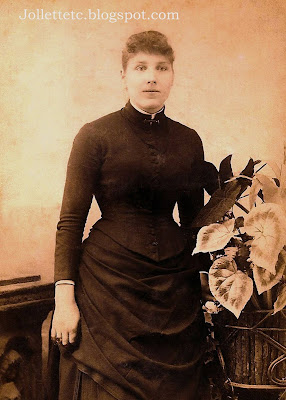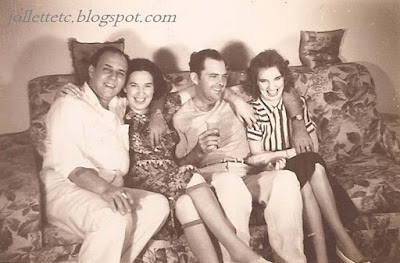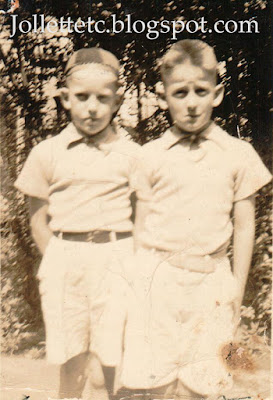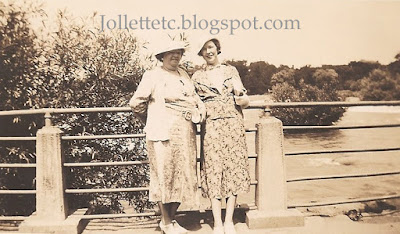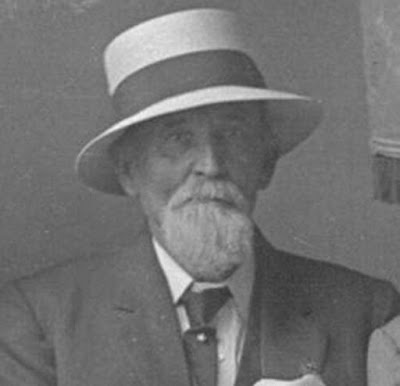One of the TREATs of blogging is connecting with distant
cousins and potential cousins. This past week I received two emails from Rucker
descendants looking for more information. That was just the kick in the pants I
needed to get back on my Rucker research.
 |
| DAR marker for Angus Rucker photo courtesy Brian Gallagher Rucker-Hoffman Cemetery, Madison Co, VA |
Some time ago I was TRICKed into thinking my oldest known-for-sure
Rucker ancestor was a descendant of Revolutionary War patriot Captain Angus
Rucker of Madison County, Virginia. I had been advised by a well-respected
Rucker researcher and then-president of the Rucker Family Society to prove that
John Frank Rucker was son of Angus. Conventional wisdom was that he was son of
Jarvis Rucker, not Angus.
It did not take long to discover that John Frank’s
children named some of their own children “Angus.” Surely they were honoring
their grandfather Angus Rucker. So it seemed a done-deal that John Frank was
son of Angus. Even Daughters of the American Revolution agree; several women
have joined this lineage society as direct descendants of Angus Rucker through
his son John Frank.
I was lulled into thinking my known great-great-grandfather
Frank Rucker was son of John Frank. I mean, after all, look at the name – Frank.
But not so fast.
John Frank Rucker died intestate in 1839. An abstract
appears in the Rockingham County Guardian Bonds book: 15 July 1839, Parent,
John F. Rucker; Orphans, Onslow, Angeline, and Eliza; Guardian Jared Powell,
Bond was $2,000, bondsmen, John Cook and Honorias Powell.
A daughter Sarah Jane had married James Frazier the year
before and thus was out of the house and not in need of a guardian. It made
sense to me that Frank likewise was of legal age and not in need of a guardian.
I have lived with that thought several years.
Try as I might to ignore the numerous documents that
refer to John Frank’s “four orphans,” now I am pretty sure Frank was not son of
John Frank. The nail in that coffin was delivered by a chancery cause of 1857 in
which Asa Baugher, administrator of the estate of Onslow Rucker, represented
his wife Eliza Rucker and her sister Angeline Rucker Roach in a suit against their
guardian Jared Powell. While details of the land dispute and proper accounting
of how Jared Powell carried out his duties as guardian are interesting to ME,
the clincher is this one sentence:
 |
| From Chancery Cause Rockingham Co, VA 1857 Adm Onslow Rucker vs Jared Powell |
The heirs at law of Onslow Rucker are Mary Rucker, his
mother, Jane Frazier wife of James Frazier, Angeline Roach wife of Mickleberry
Roach, & Eliza Baugher wife of this complainant.
Frank Rucker was very much alive in 1857, so had he been
an heir of Onslow Rucker, he would have been listed in that sentence.
At this point I cannot connect Frank to ANY Rucker male. I
have my doubts about whether Frank connects to Jarvis, which is the standard
view. Jarvis was from Culpeper County and died in neighboring Madison County. If
the death certificate of my great-grandfather Joseph Calhoun Rucker can be
believed, his father Frank was born in Amherst County.
Amherst County research will be something new for me. But
maybe determining Frank’s parents will turn out to be a TREAT. After all, there
were only 10 Rucker families listed in the 1830 census for Amherst County, and
only 2 of them had a son born about 1824. Let the search begin again.
Amy Johnson Crow continues to challenge genealogy
bloggers and non-bloggers alike to think about our ancestors and share a story
or photo about them. The challenge is “52 Ancestors in 52 Weeks.”
Wendy
© 2019, Wendy Mathias. All rights reserved.



















